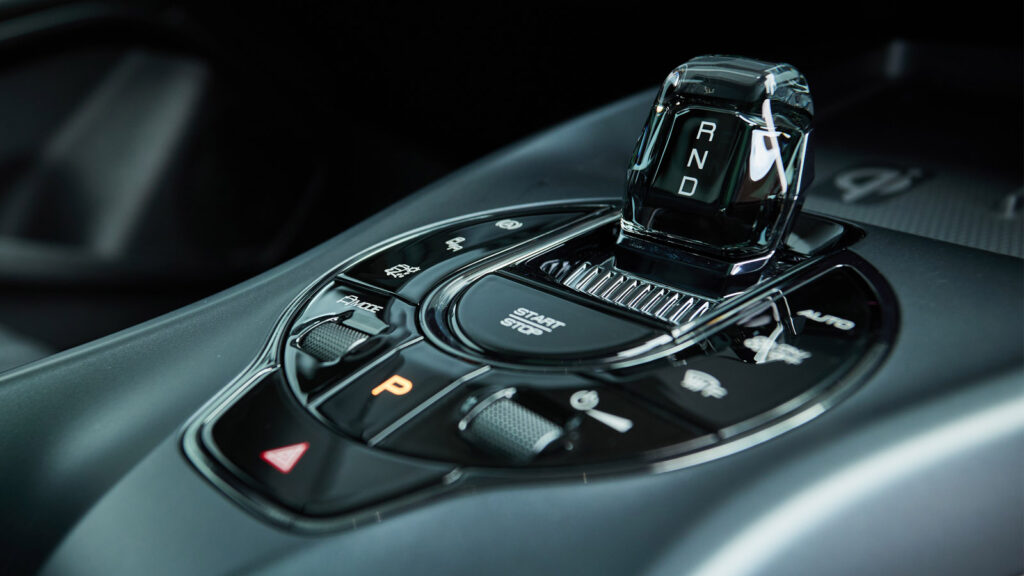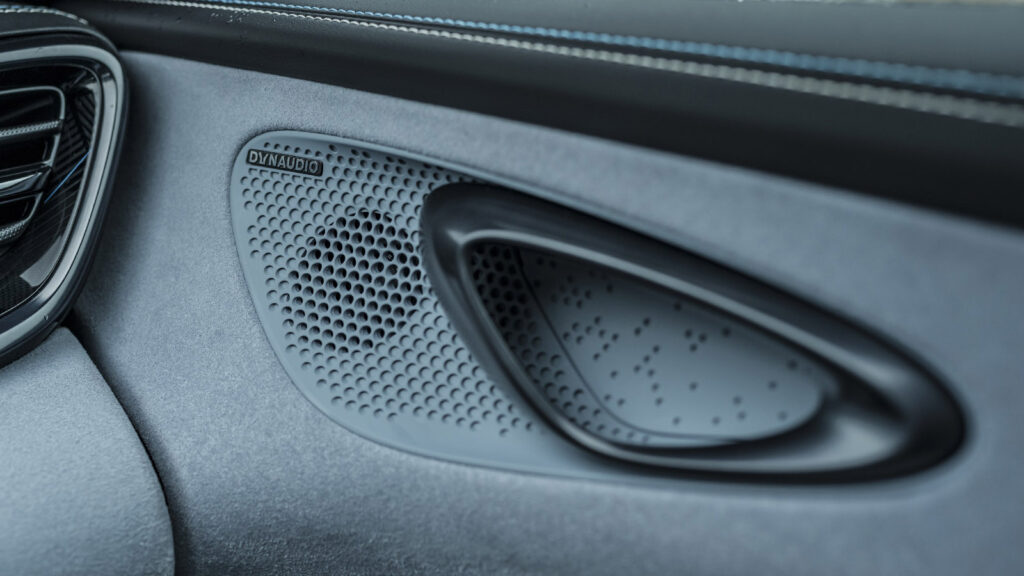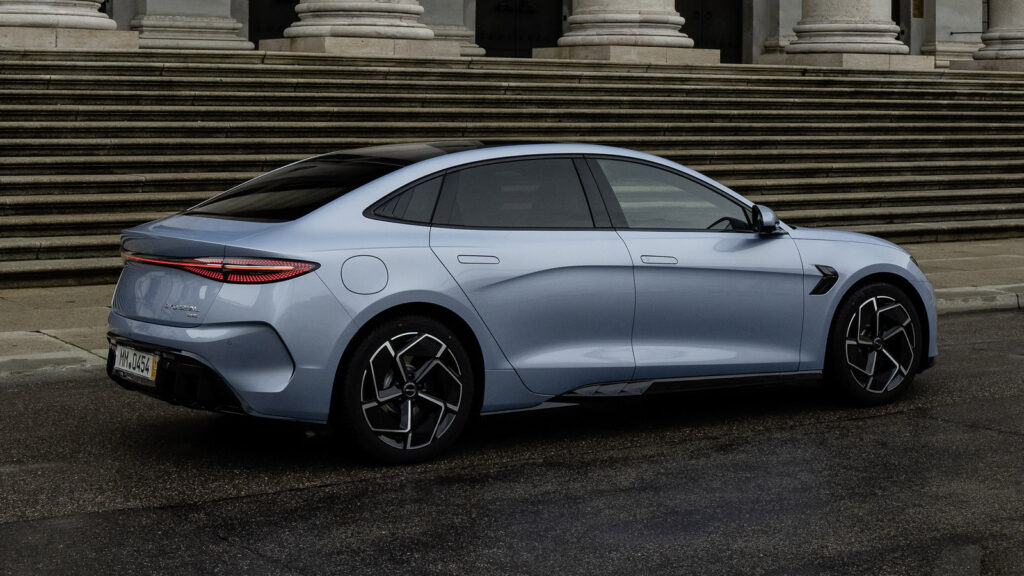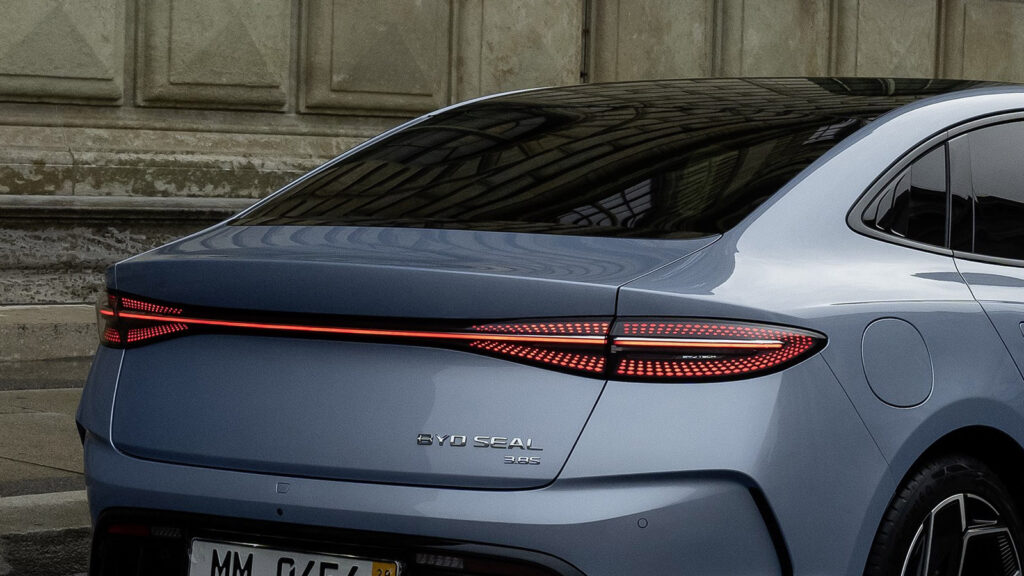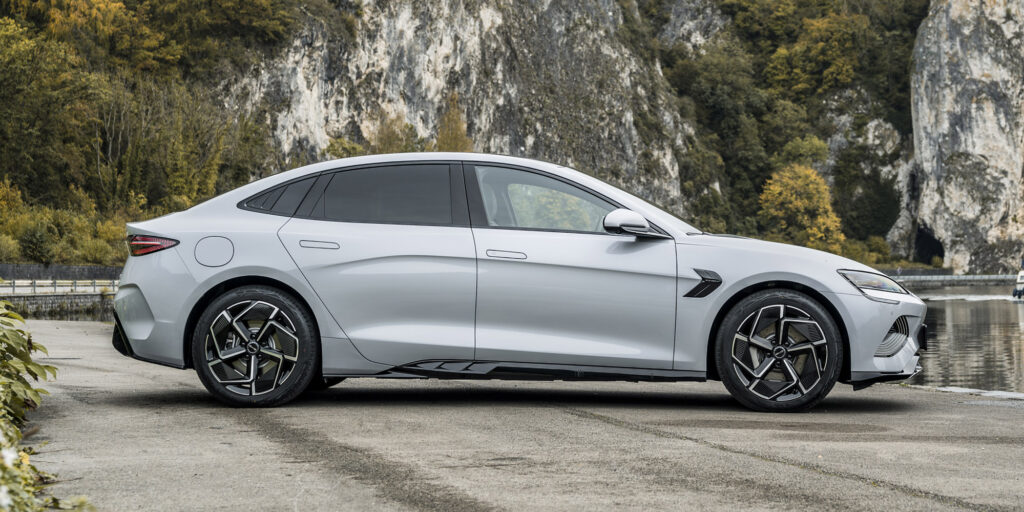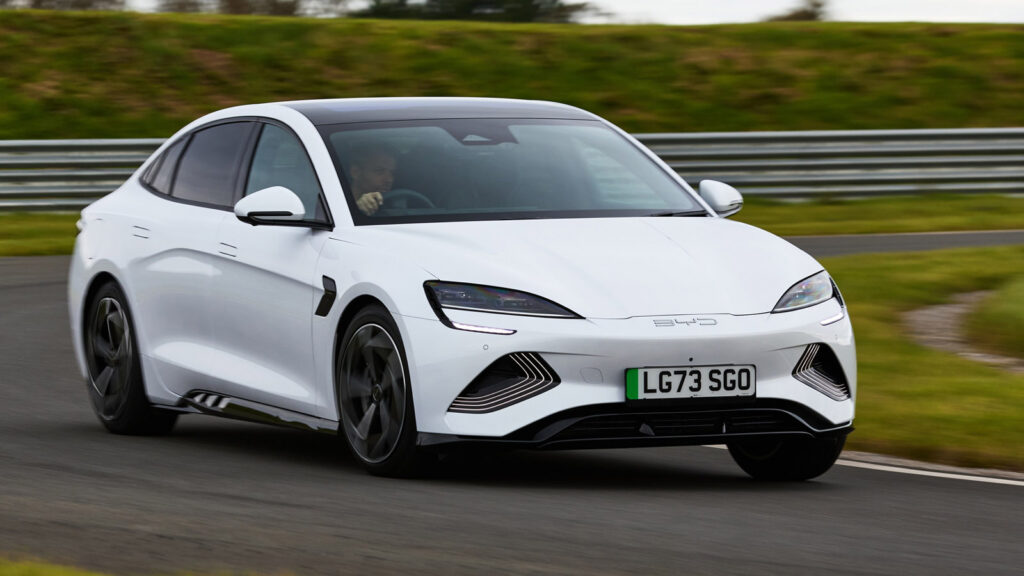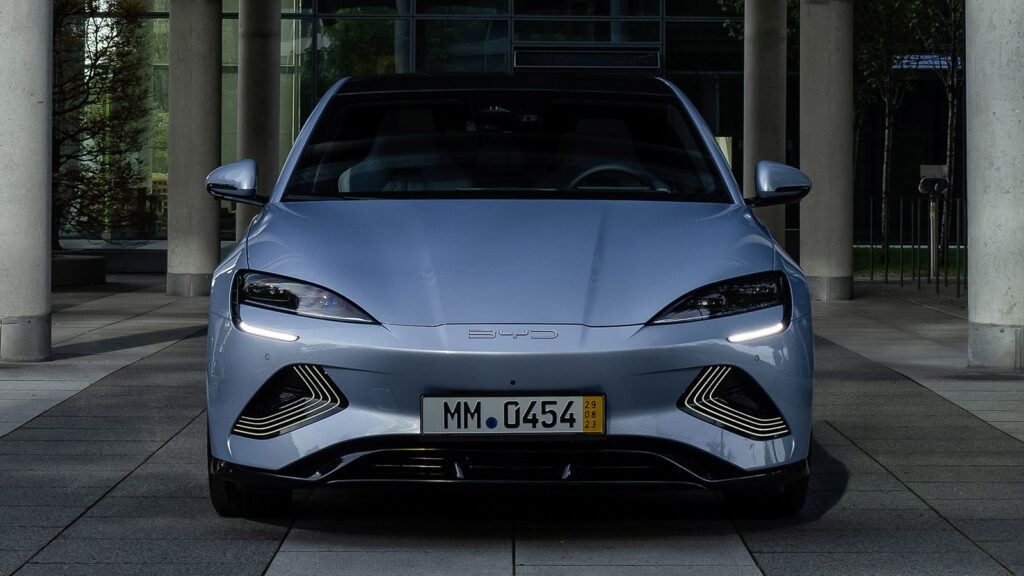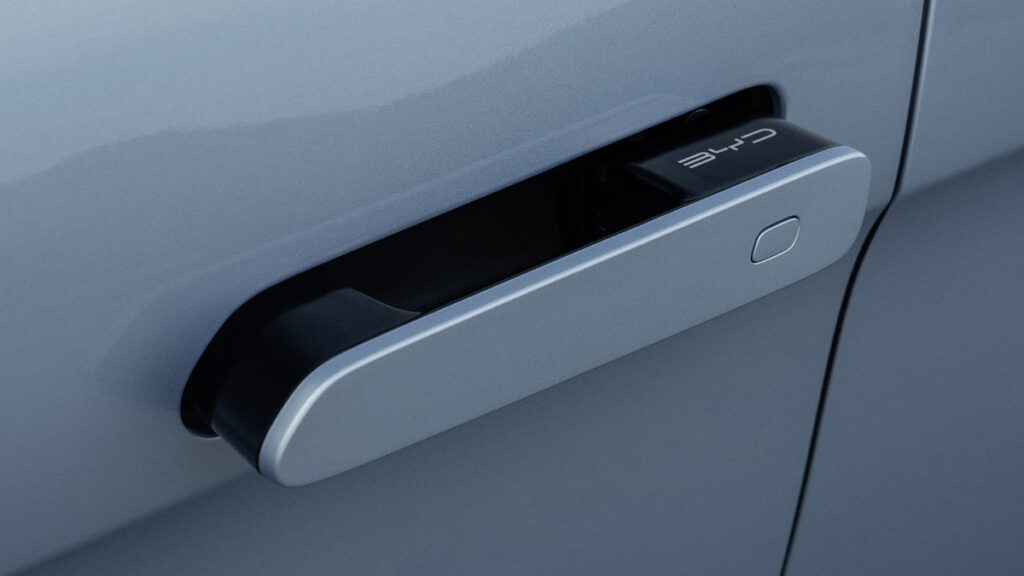BYD Seal 3.8S
Article by James Herne
BYD’s slogan is “Cool the Earth by 1°C“. To combat the climate change, we need everybody to work together.
BYD was founded in the 1990s, initially as a mobile phone battery company. In 2008, Warren Buffett bought a stake in BYD at the time the company started producing its first plug-in hybrid car. The emphasis is on “plug-in” — thanks to its battery pack, a plug-in hybrid can operate entirely as an electric car. The first BYD PHEV featured a 16 kWh lithium iron phosphate (LiFePO4) battery. The LFP battery was so expensive that it tripled the car’s price. But a start had been made. At the same time, BYD also created its first fully electric car. Then BYD and Mercedes-Benz established the electric car company Denza as a 50/50 partnership. By the end of 2024, BYD had bought back all of Denza’s shares from Mercedes. In 2024, BYD became the world’s largest electric car manufacturer.
Since 2017, BYD’s design chief has been Wolfgang Egger. Previously, he served as Alfa Romeo’s design director (responsible, for example, for the Alfa Romeo 8C) and as design director for the Audi Group (responsible for Lamborghini and Audi, including the Audi A7). Within BYD, Egger has also led the design for the premium brand Denza (including the Z9 GT) and BYD’s luxury brand Yangwang (including the U9 supercar). In 2024, Egger introduced the Super 9 concept car under a new BYD brand.
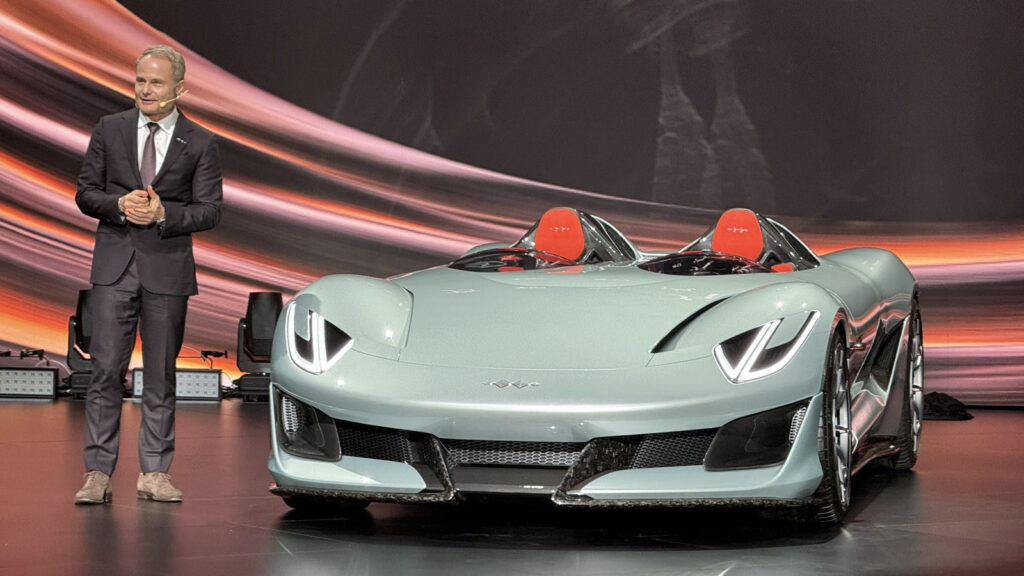
Moving on to the BYD Seal, its top version is very interesting. In China, it’s sold as the “4WD” version, in Australia as “Performance,” and in Europe as “Excellence.” Common to all markets is that the top version has a “3.8S” badge on the rear, indicating the car goes from a standstill to 100 km/h in just 3.8 seconds. It’s a result any automaker would be proud of, so why not advertise it! In my opinion, it’s a brilliant idea to display the acceleration number on the rear rather than some random version designation.
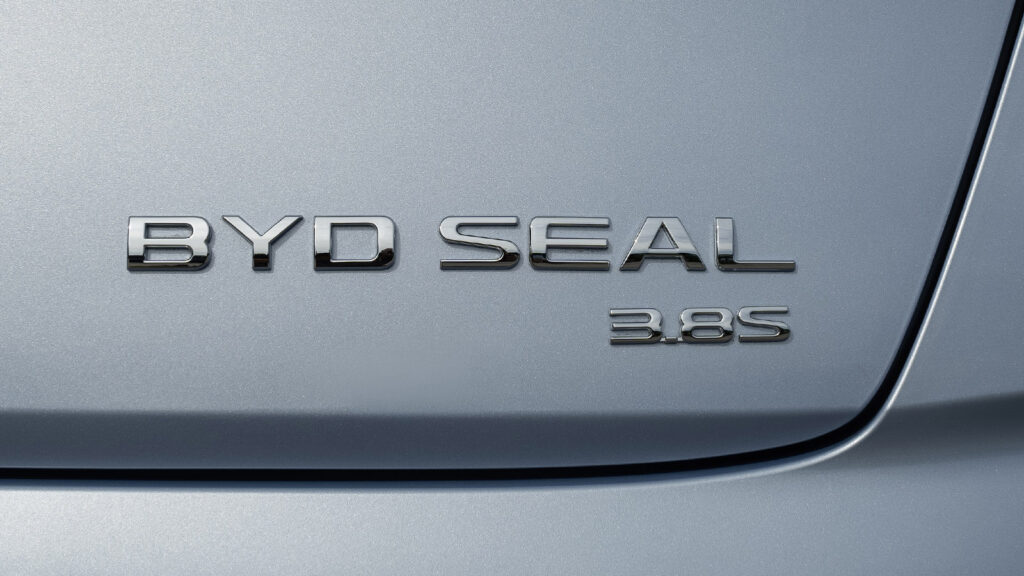
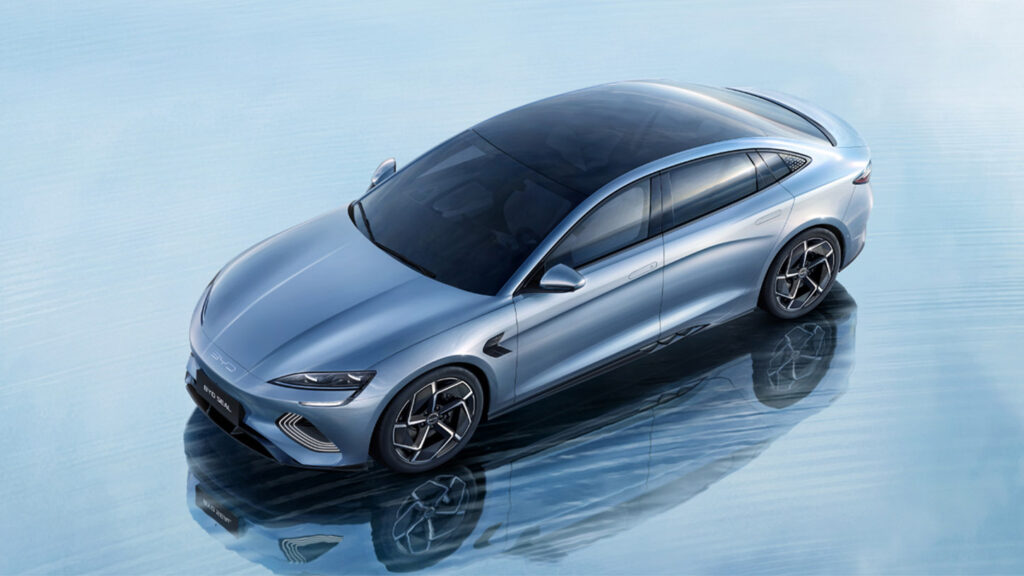
When you look at the BYD Seal, it’s immediately clear it’s being compared to the Tesla Model 3. Before starting the comparison, let’s see what kind of standard equipment BYD cars come with.
Standard equipment on all electric cars made by BYD
- OTA (over-the-air) software updates
- Heat pump
- Apple CarPlay and Android Auto
- Adaptive cruise control
- 360° cameras
- V2L
- Traffic sign recognition
- Blind spot assistant
- Lane keeping assistant
- Keyless entry, also with NFC
Additional standard equipment on BYD Seal
- Double-glazed windows to reduce noise from outside
- Dark glass for the rear part of the cabin
- Panoramic roof made of heat insulating dark glass
- Steering wheel heating
- Front seat heating
- Front seat ventilation
- Electric front seats with lumbar support adjustment
- Rain sensor
- 12 speakers
- Wireless mobile phone charging
- Front luggage compartment
- Electric rear trunk lid
- 19″ wheels
Additional standard equipment on Seal 3.8S
- 4WD
- Intelligent Torque Adaption Control (iTAC)
- Head-up display
- Adaptive dampers
- “3.8S” badge on the rear lid
I watched some BYD Seal reviews on YouTube, and they were generally positive. Since I hadn’t tried the car myself, I only had other people’s impressions, so I requested a test drive at a BYD dealership to form my own opinion.
I arrived at the BYD dealership in the back seat of a Tesla Model 3. When I sat in the back seat of the Seal, it felt like sitting in a premium car. The seats are good and also look good. Of course, the Seal is not a large car, but for a person who is 182 cm tall, there was just enough legroom behind a driver of the same height.
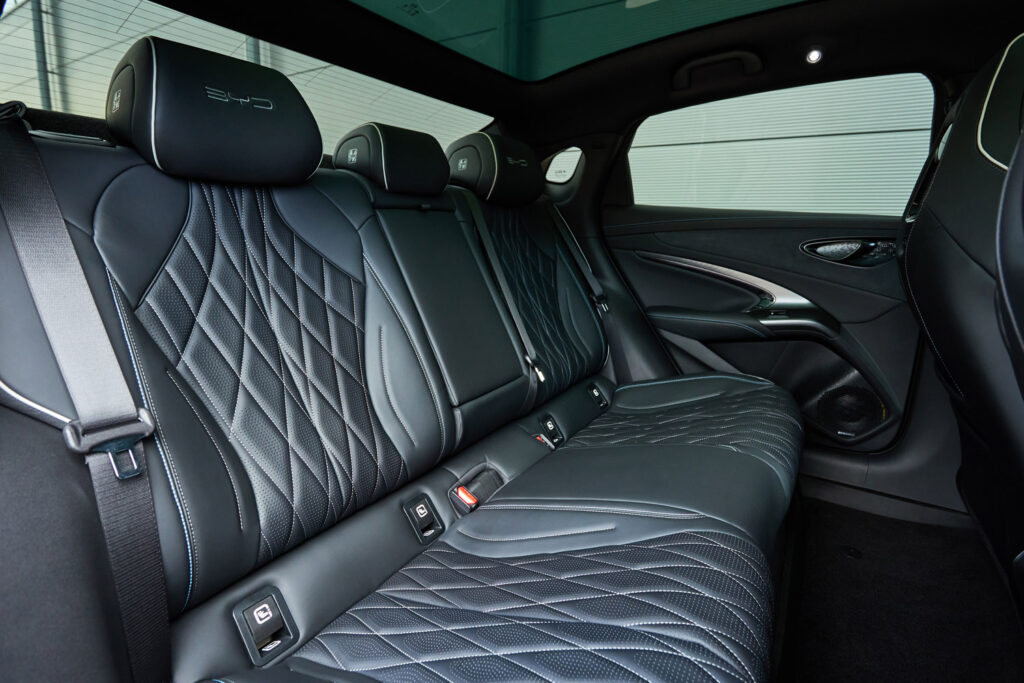
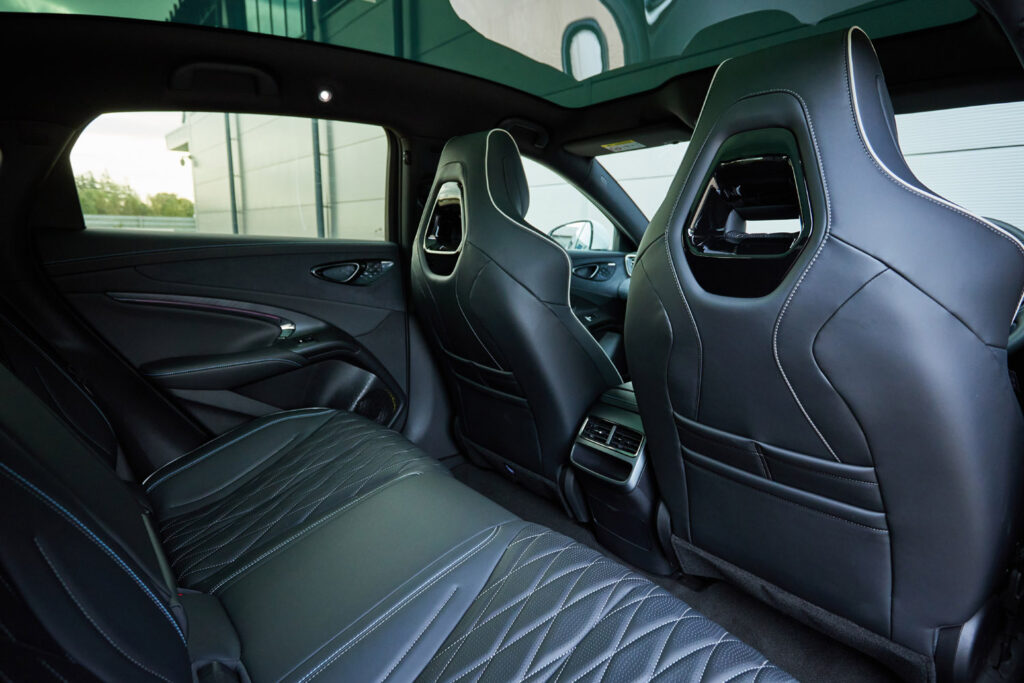
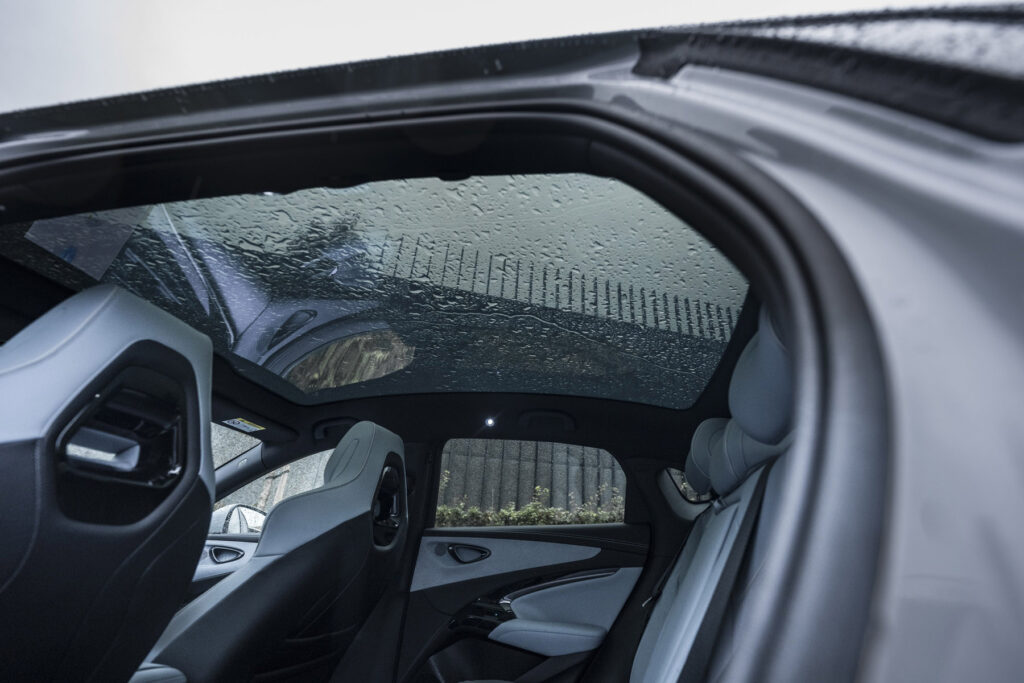
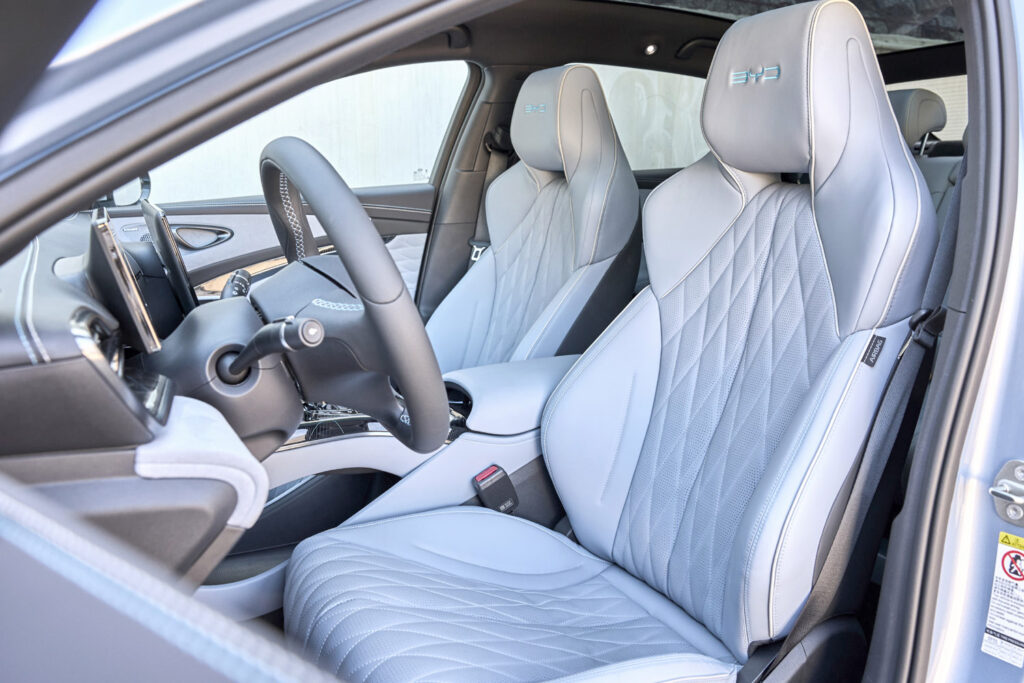
My evaluation of the driving position: it’s good.
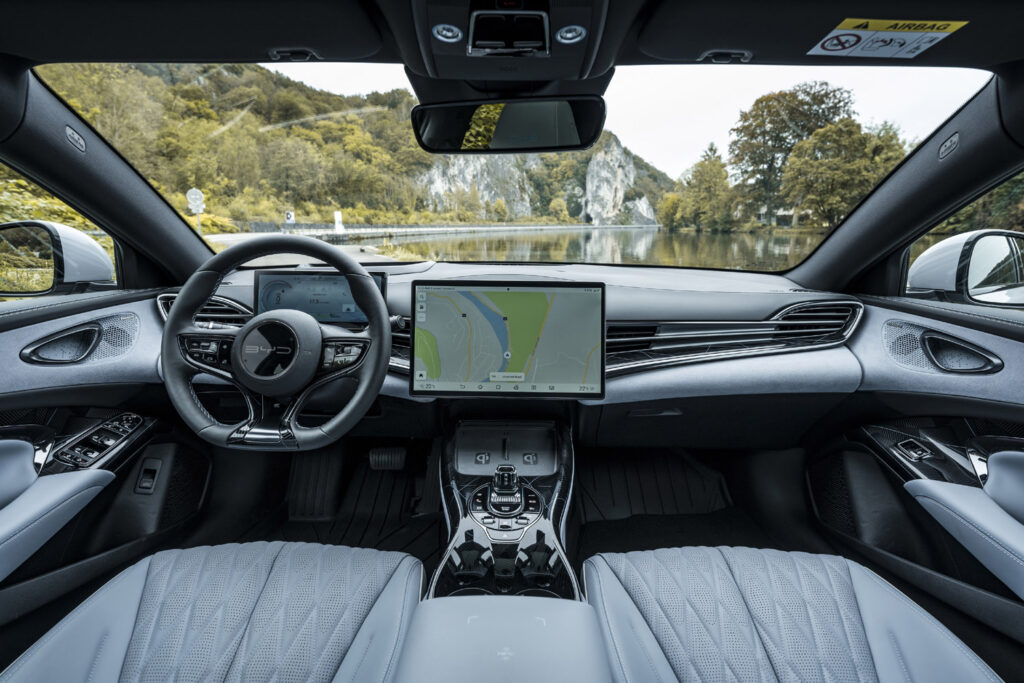
If you move the steering wheel to a lower position, then it partially blocks the 10″ screen behind it. Fortunately, the 3.8S version has a head-up display. The Tesla Model 3 lacks a screen behind the steering wheel, which I consider a big drawback.
A car enthusiast wants a car that looks interesting both inside and out, and one that has a “dialogue” with the driver. If there is no display behind the steering wheel, there is no dialogue. The problem with the Tesla Model 3 is that it’s so clinically perfect that it’s hard to love.
Many car enthusiasts love Alfa Romeos. I think I can see Wolfgang Egger’s Alfa Romeo design in BYD Seal. I would describe the recipe for making the BYD Seal as follows: 1. take a compact-sized Alfa Romeo sedan, 2. make it more premium, 3. make it electric. How could you not love the result of that recipe!
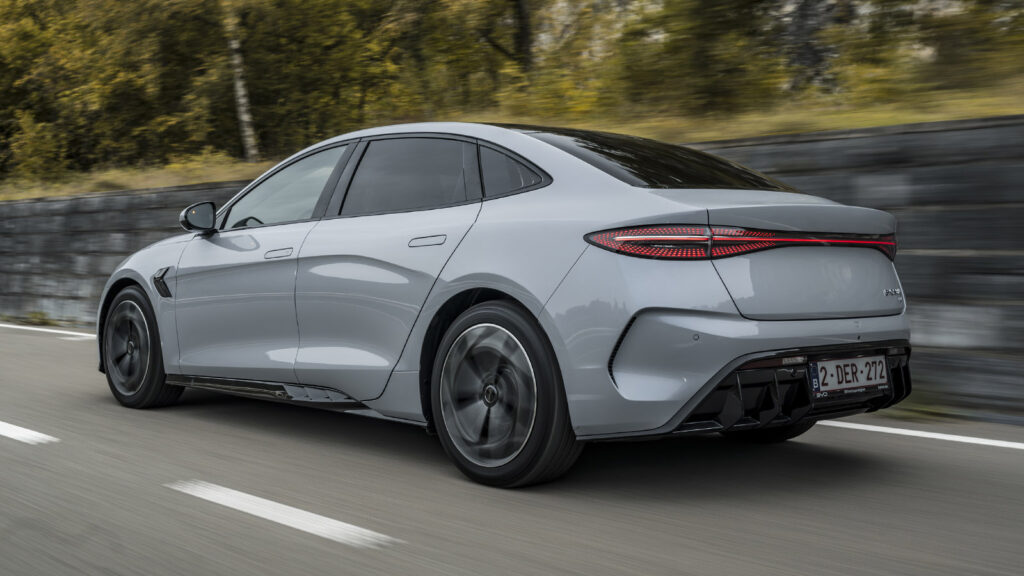
It was a snowy day when I took the test drive, and it seemed that in ECO mode with iTAC turned off, the car becomes rear-wheel drive (at least it felt like the front wheels weren’t getting any power). Comparing energy efficiency in ECO mode with iTAC on versus off, it appears the car consumes about 5% less energy when iTAC is off. So you can buy the 4WD (3.8S) version and, if desired, make it just as economical as the rear-wheel-drive version.
I tested the BYD Seal 3.8S acceleration in SPORT mode. Yes, thanks to its 160 kW front motor and 230 kW rear motor, the car is very fast. The power distribution is roughly 40% to the front axle and 60% to the rear axle, making the car “tail happy,” something many car enthusiasts enjoy. The accelerator pedal isn’t as responsive as I would like, so, I would not take it to a race track.
If you’ve driven the Porsche Taycan and Audi e-tron GT, you compare every other car to them and you can find things to complain about. On a snowy parking lot at very low speeds, I heard a humming or vibration from the suspension. It was hard to determine what it was. The 3.8S version is the only Seal equipped with adaptive dampers — maybe the dampers were trying to do something.
My biggest complaint was with the AUTO function of the ventilation system. In automatic mode, it blows a lot of air, which creates too much noise in an otherwise quiet cabin. Tesla does better in this regard.
The BYD Seal is so good that you can see how it could be perfect. BYD cars have over-the-air update capabilities, so there’s a chance they can surprise their owners in a good way. While Tesla’s software is the best, BYD’s software is also good. Good software isn’t a given in the automotive industry; it’s an achievement!

The car I tested was a 2024 model. The 2025 BYD Seal will see some changes, most notably an increase in peak charging power from 150 kW to 230 kW. BYD has to keep up with Tesla. Especially because some Tesla Model 3 and Model Y base version cars are fitted with BYD batteries. It’s also interesting to note that all Tesla Model 3 cars for Europe and Australia are made in Shanghai (the Berlin Tesla plant only produces the Model Y). So the Tesla Model 3 and BYD Seal practically come from the same place.
Software and charging power are advantages for the Tesla Model 3, while the BYD Seal is more premium. My son said the BYD Seal is more interesting than a Tesla. I agree.
